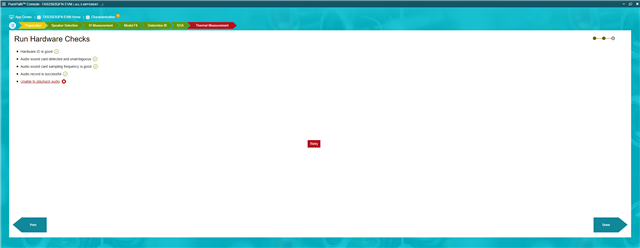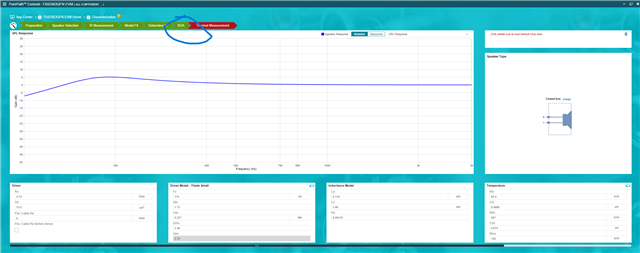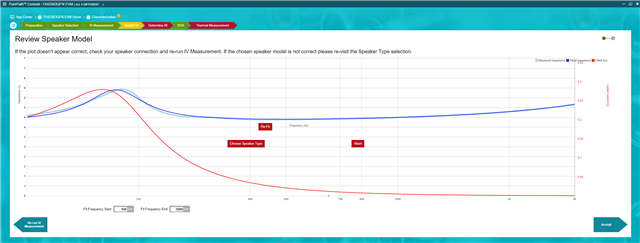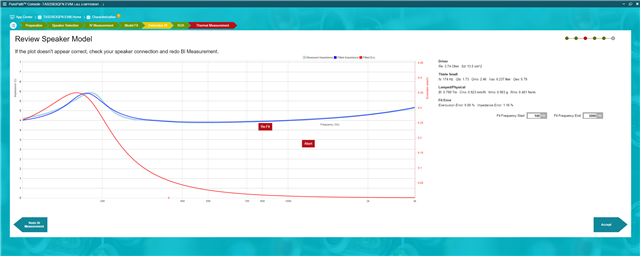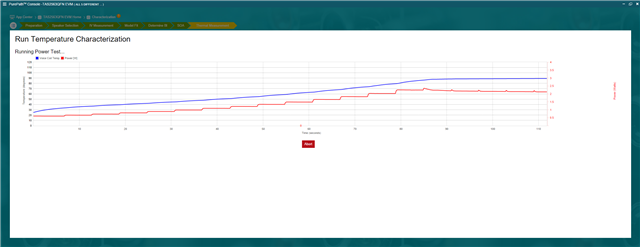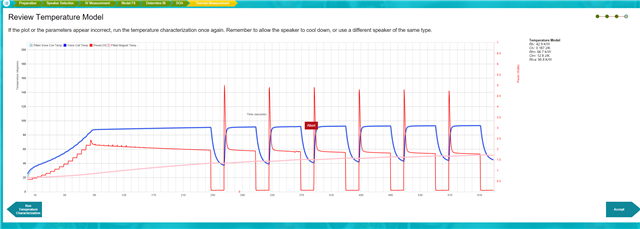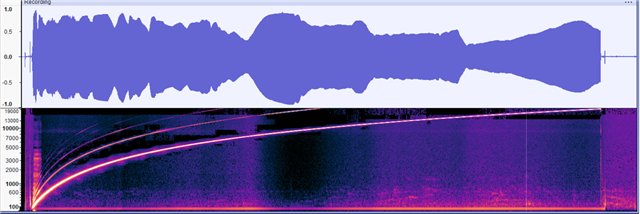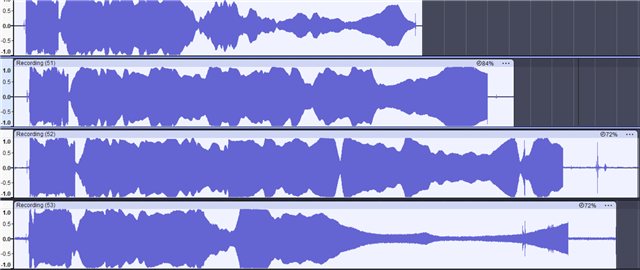Tool/software:
Hi,
I am using the TAS2x63 EVM for speaker characterization. we are using the QFN package. I know that the speaker is working and the mic is working. But when I try speaker characterization, it always fails at the hardware checks. Surprisingly it says audio playback failed. Which is not true since in the next step of IV measurement, I can clearly hear the sweep. Though hardware checks fail IV measurement and hence model fittings works fine. Pls see the attached images. The IV measurement plots a graph and the peak is observed at the resonant frequency given by the speaker manufacturer.
When I look at the PPC3 user guide, in the 2017 version(https://www.ti.com/lit/an/slaa757/slaa757.pdf) as well as the user guide video (https://www.ti.com/video/5595585518001) here, they talk about SPL measurement which is the acoustic characterization. A mic is being used to measure this. But the TAS2563 QFN package software doesnt show any SPL measurement. Also the user guide(https://www.ti.com/lit/an/slaa765/slaa765.pdf) no more talks about SPL. Is that no more needed or is there now a different way to measure the SPL? What is the purpose of the mic that is connected to the learning board if not for the SPL measurement? Right now I am using an Iphone to capture the Sweep signal(20Hz to 20KHz) being played by the speaker. I tuned the equalizer to in such a way that the waveform shape is preserved upto 4KHz. Now my suspicion is, the Iphone mic may not be good enough to capture the frequencies beyond 5-6 KHz and hence the need for the mic.
My queries are
1. Is the hardware check failure causing the SPL measurement not to show up?
2. Or SPL measurement not supported by the TAS2563 QFN? Then what is the alternate way to measure it and use it in the PPC3?
3. How do we make use of the Mic connected to the LB2 to capture the sweep being played out by the speaker. Will this capture beyond 5-6KHz properly
4. Also in my temperature measurement, I get a waveform as shown in the image, which is not correct. What could be the issue here?
5. In the bare metal code example provided, there are some sample configurations for speech, music etc. These are generated using PPC3 tools I guess. Hence can these cfg files be loaded into the PPC3 and visualize the settings used to generate those cfgs?
Regards
Rajesh
